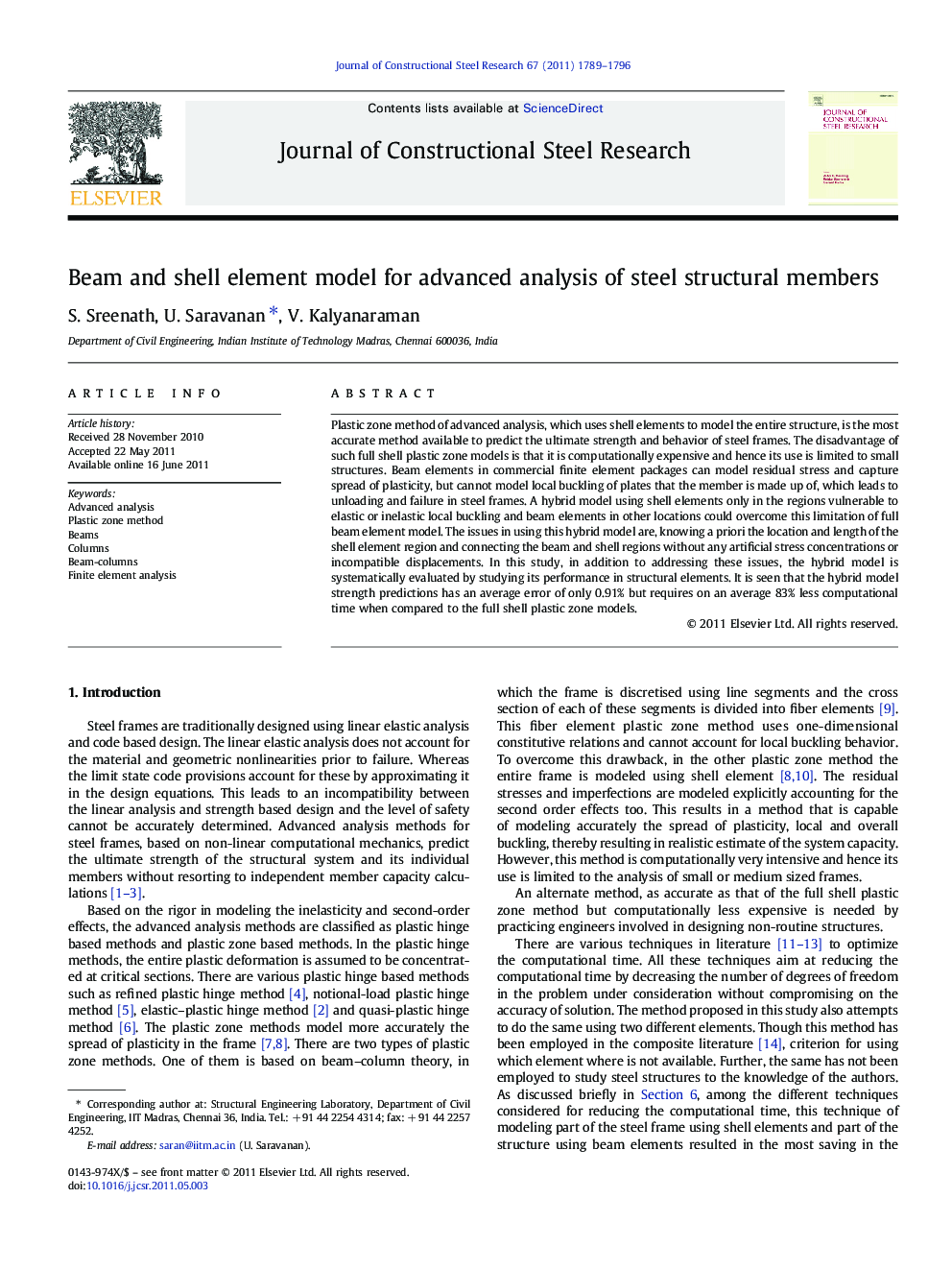| Article ID | Journal | Published Year | Pages | File Type |
|---|---|---|---|---|
| 285333 | Journal of Constructional Steel Research | 2011 | 8 Pages |
Plastic zone method of advanced analysis, which uses shell elements to model the entire structure, is the most accurate method available to predict the ultimate strength and behavior of steel frames. The disadvantage of such full shell plastic zone models is that it is computationally expensive and hence its use is limited to small structures. Beam elements in commercial finite element packages can model residual stress and capture spread of plasticity, but cannot model local buckling of plates that the member is made up of, which leads to unloading and failure in steel frames. A hybrid model using shell elements only in the regions vulnerable to elastic or inelastic local buckling and beam elements in other locations could overcome this limitation of full beam element model. The issues in using this hybrid model are, knowing a priori the location and length of the shell element region and connecting the beam and shell regions without any artificial stress concentrations or incompatible displacements. In this study, in addition to addressing these issues, the hybrid model is systematically evaluated by studying its performance in structural elements. It is seen that the hybrid model strength predictions has an average error of only 0.91% but requires on an average 83% less computational time when compared to the full shell plastic zone models.
Research highlights► Hybrid beam and shell model for the advanced analysis of steel frames proposed. ► Length and location of shell regions arrived at. ► Models validated with available experimental data. ► Efficiency and accuracy demonstrated in beams, columns and beam-columns.
